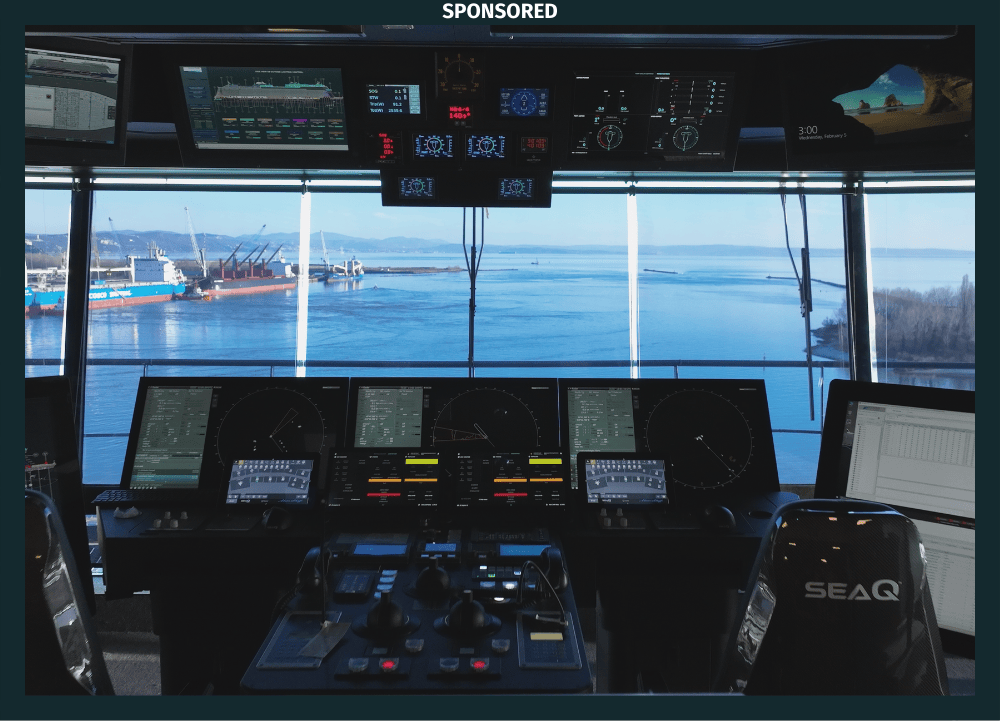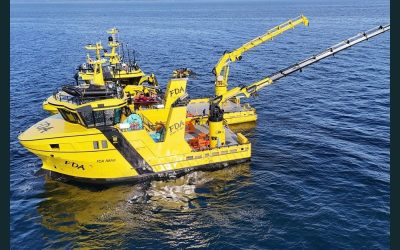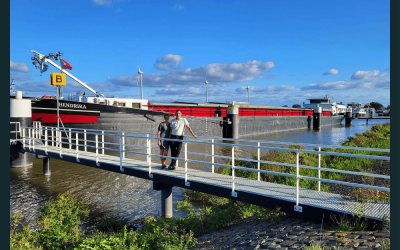As cruise ships grow in size and complexity, digitalizing onboard systems becomes increasingly critical – not only to improve operational efficiency and safety, but also to enhance the working environment for crews navigating these advanced ships at sea.
With the first delivery of its SeaQ Bridge system aboard the cruise vessel Mein Schiff Relax, built by Fincantieri, the subsidiary Vard Electro introduces a fully digitalized and ergonomically optimized solution that sets a new benchmark in bridge design and shipboard operations within the cruise industry. The group’s highest level of bridge integration is a bridge solution with an extended architecture, utilizing a combination of integrated solutions, combined with touch monitors to gather various systems into one operator station.
The project is the result of a close collaboration between shipowner, shipbuilder, technology supplier, navigational officers and the crew, ensuring a seamless integration of design, construction and system implementation tailored for the needs of a modern cruise vessel.
Type-approved design and custom function testing
The SeaQ Bridge is type-approved by DNV, one of the world’s leading classification societies, ensuring compliance with the highest maritime standards. For each project, a separate test is conducted in collaboration with class and ship owners, ensuring that the system meets specific operational requirements. The process has started to have approval in RINA as well.
Expandable integrated applications
What sets the SeaQ bridge as benchmark is its integration of key shipboard systems, including also third-party solutions, into a centralized human-machine-interface (HMI), operable via touchscreens featuring intuitive apps and drag-and-drop functionality.
This setup allows operators to configure personalized layouts, granting immediate access to critical functions. Importantly, the number and arrangement of screens on the bridge are now determined by customer requirements, rather than system limitations, offering a tailored solution that aligns with specific operational needs.
Designed for scalability, the SeaQ Bridge integrates additional applications – such as intercom directories and alarm management – and supports the development of new functionalities as operational needs evolve, while also allowing existing systems to expand.
Extended integration across the ship
The SeaQ Bridge system extends its advanced capabilities to the Safety Command Centre, featuring a large video wall composed of 55-inch multi-displays, each capable of four-way splits, providing operators with a complete overview of critical systems. Dedicated workstations ensure each operator access to essential controls and information.
This integrated SeaQ approach supports coordinated action and faster decision-making across the ship. The same concept is applicable to the Engine Control Room (ECR). All relevant systems from the traditional ECR are now integrated into a common interface. This redundant solution offers user-driven flexibility without compromising system reliability.
In every aspect, this installation demonstrates how digitalization, collaboration, and smart design can transform cruise ship automation and navigation systems. With Mein Schiff Relax, Vard Electro, TUI Cruises, and Fincantieri have created a solution that sets a new standard for future cruise ships.
Also, SeaQ contributes to Fincantieri’s strategy to evolve from Physical vessel design authority to Digital vessel design authority, strengthening its leadership position in technological innovation applied to shipbuilding and to the whole shipping industry.


